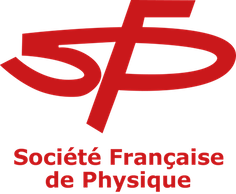Orateur
Description
Symmetries play a crucial role in our current understanding of the fundamental properties of the Universe. Any combination of the three discrete operations, i.e. charge conjugation (C), parity (P), and time reversal (T) results in a CPT transformation. The corresponding CPT theorem states that CPT is an exact symmetry of nature and puts the following constraints on any quantum field theory (QFT): the Langrangian of the corresponding QFT is Hermitian and local, and Lorentz invariance is observed. An observation of CPT symmetry violation would lead to a serious crisis for QFTs. Experimentally, CPT symmetry can be tested by measuring masses and lifetimes of particles and antiparticles. If CPT symmetry holds, the masses and lifetimes of particles and anti-particles should be equal.
In the multi-strange baryon sector, the only CPT test via the measurement of the mass difference of $\Xi^{-}$ and $\overline{\Xi}^{+}$ dates from 2006 (Abdallah et al.), and from 1998 (Chan et al.) for the $\Omega^{-}$ and $\overline{\Omega}^{+}$ mass difference. The data sample consisted of 2500(2300) for the $\Xi^{-}$ ($\overline{\Xi}^{+}$) and of 6323(2607) for the $\Omega^{-}$ ($\overline{\Omega}^{+}$) analysis. The latest update of the absolute masses of $\Omega^{-}$ and $\overline{\Omega}^{+}$ is from Hartouni et al. (1985) based on a sample of 100(72) $\Omega^{-}$ ($\overline{\Omega}^{+}$) baryons. Clearly, an update of the multi-strange baryon masses and their differences is called for.
In this contribution, a measurement of the mass difference of the $\Xi^{-}$ and $\overline{\Xi}^{+}$, and of the $\Omega^{-}$ and $\overline{\Omega}^{+}$ baryons in proton-proton collision at a centre-of-mass $\sqrt{s}$ = 13 TeV with the ALICE experiment will be presented. The data samples are much larger than those used previously for such measurements: $\sim$1 000 000 $\Xi$ and $\sim$80 000 $\Omega$ with a low level of background.

